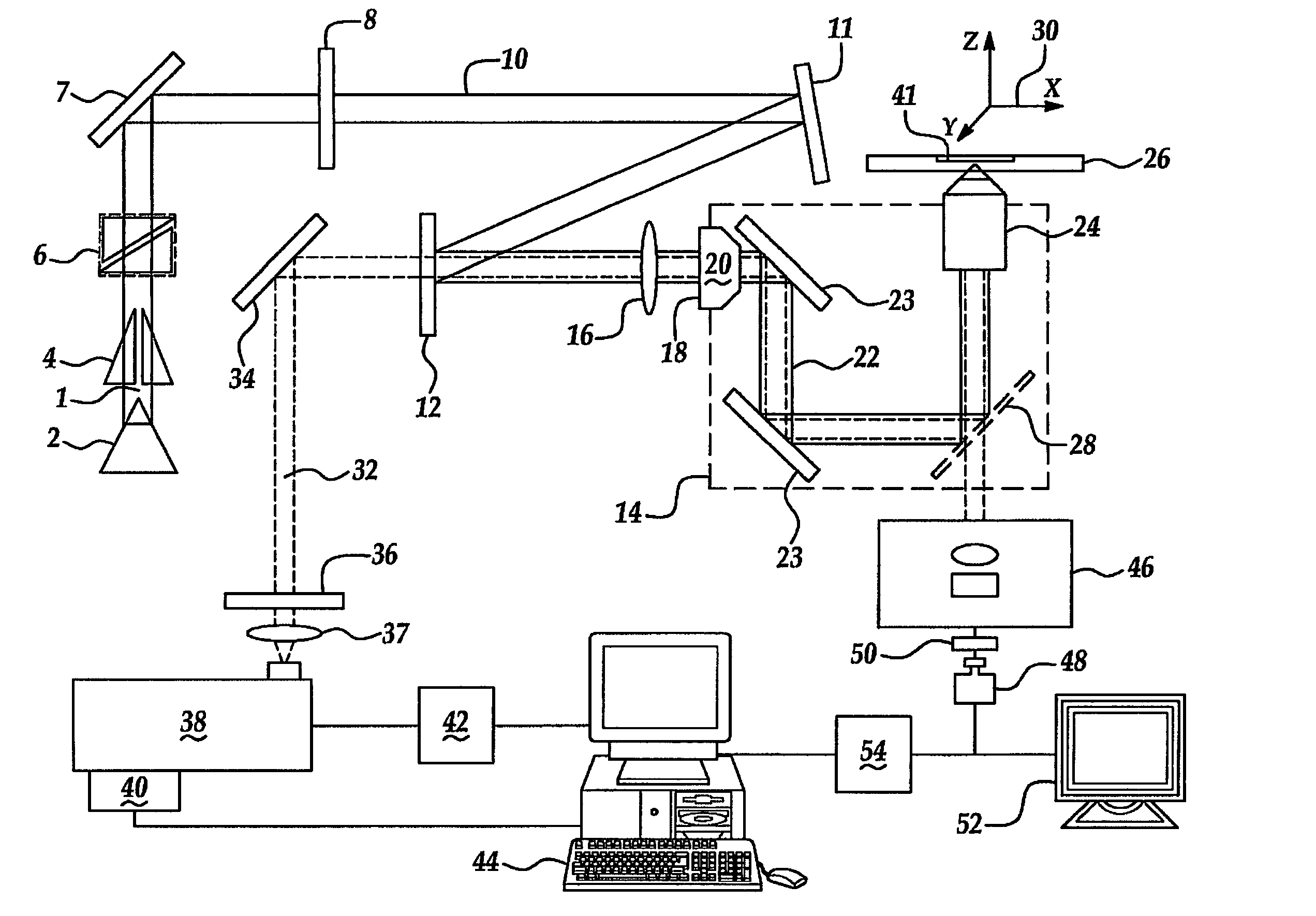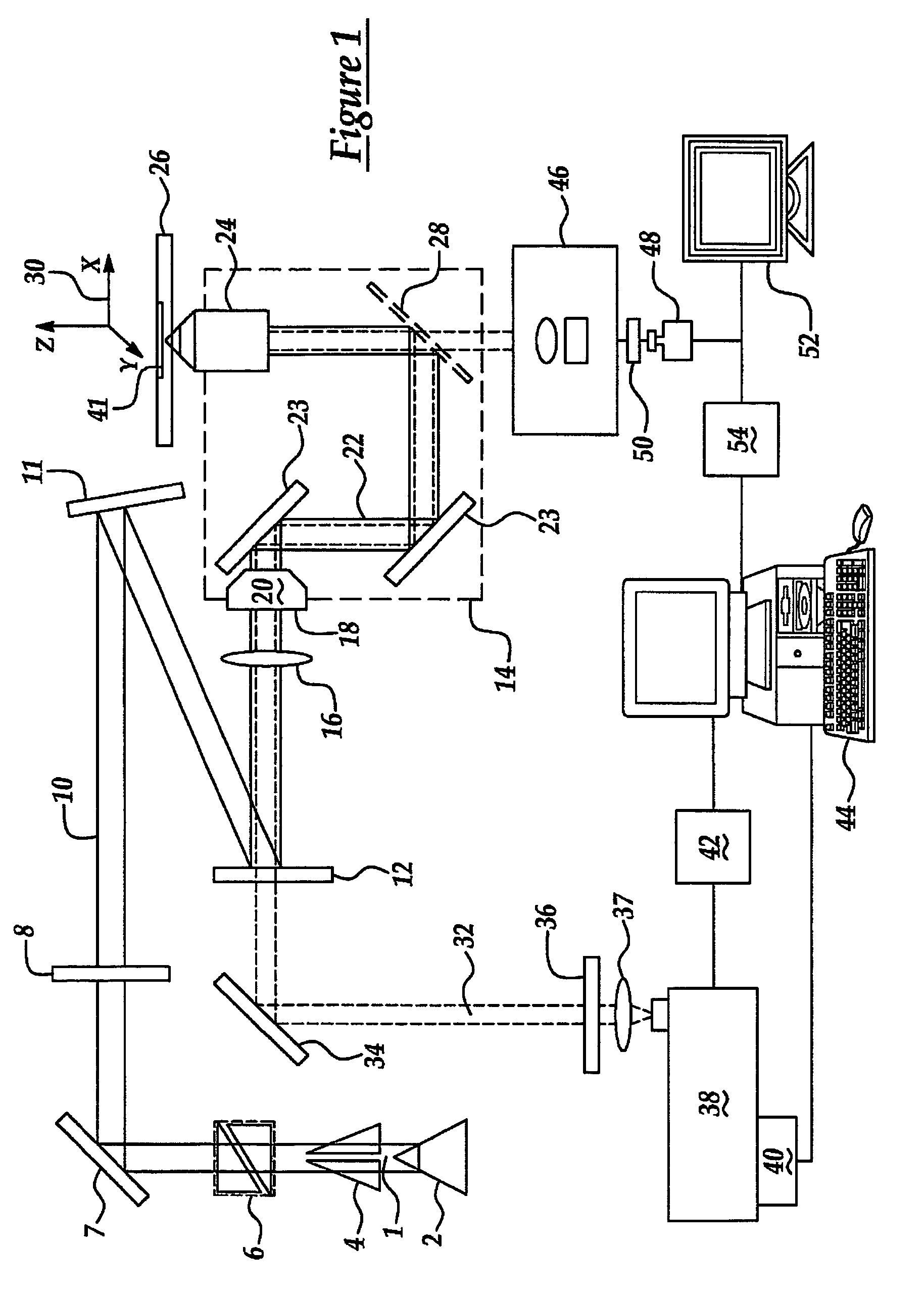Surface-enhanced-spectroscopic detection of optically trapped particulate
a surface-enhanced, spectroscopic technology, applied in the field of non-destructive single particle characterization, can solve the problems of many forms of particulate, including organic polymers and biological cells, that cannot tolerate the spectroscopic techniques needed to characterize them directly, and resort to staining or shadowing techniques that are both labor-intensive and destructive to test subjects
- Summary
- Abstract
- Description
- Claims
- Application Information
AI Technical Summary
Benefits of technology
Problems solved by technology
Method used
Image
Examples
example 1
[0041]SERS-active substrates are prepared by a method similar to that suggested by Grabar, Freeman, Hommer and Natan (19) using freshly synthesized 60 nanometer gold colloids. Briefly, standard glass microscope slides are cleaned for 1-h in a bath consisting of 1:4 (v / v) 30% H2O2 to sulfuric acid bath at 60° C. Subsequent to cleaning, the microscope slides are profusely washed in methanol and stored in fresh CH3OH until needed. A self-assembled-monolayer (SAM) of 3-Aminopropyltriethoxy silane (APTES; Aldrich Chemical Company) is formed on the cleaned glass substrates by submerging the glass slides in a solution of the silane diluted 1:4 (v / v) in methanol. After 24-h, the APTES-derivatized glass is removed from the silane solution and washed repeatedly (˜15×) with methanol to remove any unbound silane from the surface. The APTES-derivatized glass is stored in fresh methanol until needed.
example 2
[0042]Gold colloids of 60 nanometer size freshly prepared by a previously published (26) method are coupled to the silanized substrate by immersing the washed glass in the aqueous colloidal suspension for 24-h at room temperature. Subsequent to the colloidal coupling the SERS substrates are washed with and stored in de-ionized water until needed for analysis. UV-visible absorbance measurements (not shown) of these substrates reveal a Surface Plasmon Resonance (SPR) optimally excited with 715 to 775 nanometer light. SERS-substrates fabricated through this method are near optimally excited using the NIR-RTDS.
example 3
[0043]Bacillus stearothermophilus (ATCC 10149 and ATCC 7953) are purchased from Raven Biological Laboratories, Inc. (Omaha, Nebr.) as 40% ethanol-deionized water suspensions. According to the manufacturer, these spores were prepared by incubation in soybean-casein digest broth at 55 to 60° C. for 7 days. Samples for measurement are prepared by diluting 100 microliters of the spore suspension in 40 milliliters of 18 MΩ deionized water to give a final concentration of 7.5×104 CFU / ml (CFU=colony forming units).
PUM
| Property | Measurement | Unit |
|---|---|---|
| interrogation wavelength | aaaaa | aaaaa |
| interrogation wavelength | aaaaa | aaaaa |
| angle | aaaaa | aaaaa |
Abstract
Description
Claims
Application Information
 Login to View More
Login to View More - R&D
- Intellectual Property
- Life Sciences
- Materials
- Tech Scout
- Unparalleled Data Quality
- Higher Quality Content
- 60% Fewer Hallucinations
Browse by: Latest US Patents, China's latest patents, Technical Efficacy Thesaurus, Application Domain, Technology Topic, Popular Technical Reports.
© 2025 PatSnap. All rights reserved.Legal|Privacy policy|Modern Slavery Act Transparency Statement|Sitemap|About US| Contact US: help@patsnap.com



